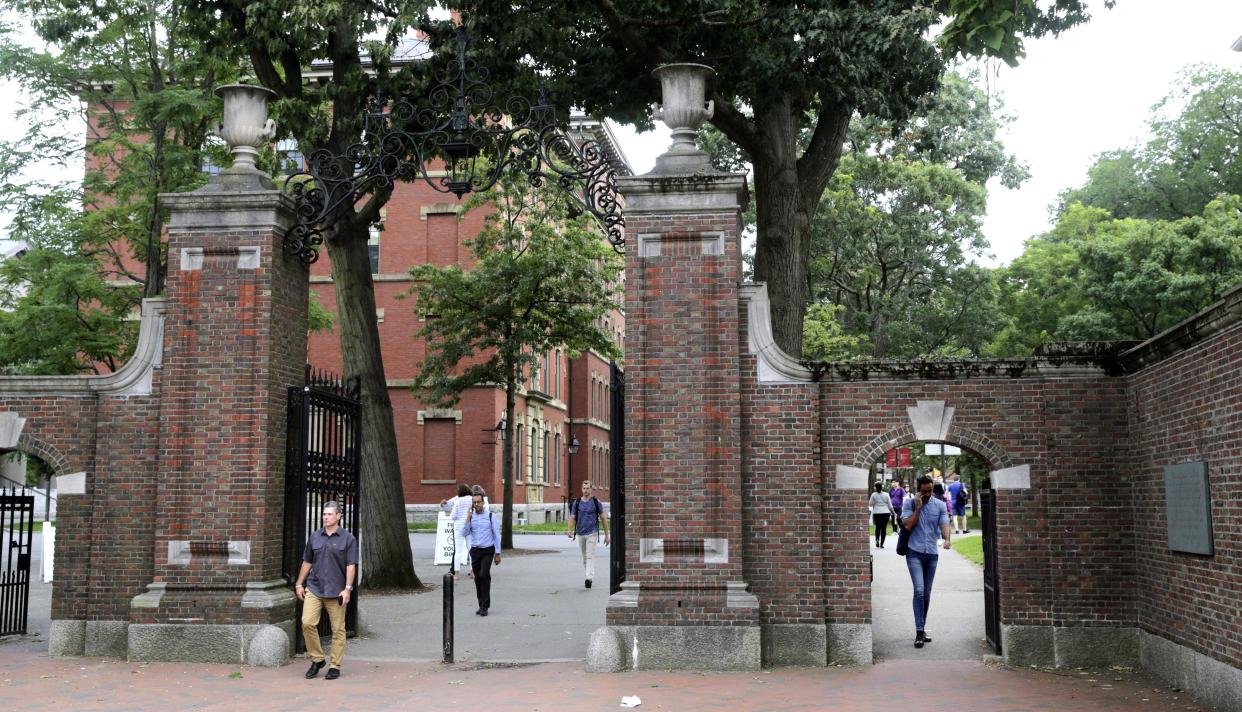Opinion: Size of your student debt may be linked to how wealthiest universities got rich

Bruce A. Kimball, an emeritus professor in the Department of Educational Studies at The Ohio State University, and Sarah M. Iler, assistant director of Institutional Research at the University of North Carolina School of the Arts, are authors of the forthcoming book, “Wealth, Cost, and Price in American Higher Education: A Brief History.”
Over the past 150 years, the endowed wealth of American higher education has become increasingly stratified and now parallels the wealth inequality among Americans, as revealed in our forthcoming book.
In fact, the richest 1% of non-profit colleges and universities (which include The Ohio State University) own 54% of endowment in higher education today, while the richest 1% of American households own 53% of households' invested capital.
More:Ohio State University keeps last year's spot in new U.S. News college rankings
This parallel helps to explain the rising debt of undergraduates, which impairs social mobility in the nation.
In the late 1800s, colleges and universities began amassing large amounts of invested capital, and higher education became stratified by wealth.
Between 1870 and 1920, nine universities with the largest endowments - Chicago, Columbia, Cornell, Harvard, Johns Hopkins, M.I.T., Princeton, Stanford, and Yale — formed a top tier, and in 1920 Harvard attained the lead in endowment size that it still holds today.
Below those nine, 30 more schools formed a second tier in the 1920s, including the public universities of California, Minnesota, Texas, and Virginia. Together these two tiers comprised about 4% of the 965 non-profit schools at the time. Nearly all remain in the top 4% today.
Fact check:Harvard's endowment is taxed, has limitations on spending
The persistent lead of these richest schools was small at first, and the wealth gap grew dramatically after 1950 due to what we call the "wealth advantage" of the rich colleges and universities.
More:How to submit guest opinion columns to the Columbus Dispatch
Richer universities used their jump
This advantage started with unequal fundraising because wealthy schools had more rich alumni, who made large gifts and bequests.
Today, each additional increment of $100 million of endowment is associated with an additional $2 million in annual donations. Compounding that factor, wealthy schools spend less per-dollar raised than do less endowed schools.
This fundraising advantage was increased by several factors in endowment investing or "portfolio management."
Portfolios managed
Already in the 1920s, scholars observed that wealthy schools had greater access to financial expertise because their trustees knew the best portfolio managers and could afford to hire them.
After World War II, these factors were compounded by a three-stage revolution in portfolio management.
More:Preparing for student loan forgiveness? Don't miss these four important dates
In the 1950s, wealthy schools began investing 60% of their endowment in equities.
In the 1970s, these institutions started "total return" investing in riskier "growth" stocks. In the 1990s, they invested in even riskier "alternative assets," including hedge funds, private equity, and natural resources.
Enormous returns from these three aggressive tactics vastly widened the wealth stratification, because the great majority of colleges and universities, having little capital, could not afford to take such risks. They lagged behind each stage of the revolution.
Also, while joining the revolution in portfolio management, the wealthiest schools followed conservative rules limiting the spending of their endowment income. They plowed the unspent income back into their invested capital, which grew more rapidly.
The back up plan
Finally, if the wealthiest schools stumbled, they could issue bonds to cover current obligations until their investments recovered, as Harvard did during the Great Recession. Less endowed schools, particularly historically Black colleges and universities (HBCUs), found it harder to issue such bonds, and paid more in underwriting fees to do so.
All these factors constitute rich schools' wealth advantage and parallel those benefitting wealthiest Americans. They also help explain the rising debt of undergraduates.
Most college students holding large debt come from working-class or middle-class households whose wages and salaries have not grown as fast as the cost of living or the return on invested capital, which is owned predominantly by the wealthiest Americans.
Also, these undergraduates generally attend less-expensive and less-endowed schools whose capacity to meet their students’ growing needs has diminished because their resources (and government subsidies) have slipped further behind that of wealthy colleges and universities.
Consequently, undergraduates who depend on wages and salaries and do not attend schools with large endowments have ever greater need for loans and fall into debt. Inevitably, the prospect of debt — now totaling about $1.7 trillion for all students — discourages many from attending college and impedes social mobility.
Bruce A. Kimball, an emeritus professor in the Department of Educational Studies at The Ohio State University, and Sarah M. Iler, assistant director of Institutional Research at the University of North Carolina School of the Arts, are authors of the forthcoming book, “Wealth, Cost, and Price in American Higher Education: A Brief History.”
This article originally appeared on The Columbus Dispatch: What is the link between college endowment size and student debt| Opinion

